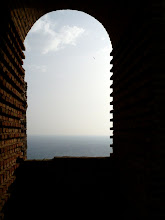
I. If the paths of glory lead but to the grave, the path to journalistic success isn't exempt. Unfortunately, in the case of the above journalists, their shot at immortality killed the very name they sought. Listed from left to right, Stephen Glass, Jayson Blair, Jack Kelley, and Janet Cooke are notorious for betraying the trust of their readers and fellow journalists alike. Stephen Glass, formerly on staff of the famed New Republic, lost his job when Adam Penenberg discovered several holes in Glass's feature, "Hack Heaven." Penenberg, a reporter for Forbes.com, pursued the story and found that most of Glass's feature was unverifiable. As Penenberg pursued the investigation, it became apparent that not only had Glass invented companies, people, and even fake newsletters in an effort to prove "Hack Heaven's" veracity, but he had fabricated material for other pieces as well. Glass promptly lost his job (Penenberg; Shattered Glass).
Jayson Blair worked his way up from intern to reporter on the staff of the New York Times. However, several colleagues questioned his professional reliability, and in April 2002 Blair's articles were so full of error that he pled personal problems and took leave. Shortly after he began working again, the extent to which he had used false information began to come out. Not only had Blair lied about his whereabouts, but in many instances, he had also fabricated quotes and events, and stolen material from other newspapers. Blair was fired shortly after, but the breach in the Time's reputation would take much longer to repair ("Times Reporter").
Former star-reporter Jack Kelley also pleads guilty of fabricating materials, stealing quotes, and even lying in his speeches. While reporting for USA Today, he even scripted speeches to help other people mislead the investigators USA Today sent to check up on his facts. One of his antics was using the picture of a hotel worker to embellish his feature on Cuban refugees, even going so far as to declare that the women in question had died in her attempt. An anonymous complaint about the reporter's veracity started an investigation that would leave Kelley's reputation as full of holes as his stories had been. On January 5, 2004, Kelley was asked to resign (Morrison; Banville).
Janet Cooke, as reporter for the Washington Post, wrote a feature called, "Jimmy's World." This vivid, heart-stirring piece about a young heroin addict was so moving that it was awarded the Pulitzer Prize. However, when it turned out that most of her story was a hodgepodge of second-hand information, rather than being eye-witness as the piece made it out to be, the Pulitzer Prize was withdrawn. Ironically, her story was so moving that the Mayor Barry of "Jimmy's" city assigned a task force to find the child. Jimmy could not be found, for Jimmy did not exist. Cooke resigned on April 15, 1981 (Maraniss).
II. Even colleges are not immune to plagiaristic journalists. For instance, in 2005, California Polytechnic State University's Mustang Daily was soiled with the scandal of plagiarism. Up-and-coming journalist Rebecca Laman was caught plagiarizing online materials that were then printed in the student paper. Her decision back-fired however, when the plagiarism became known. The scandal took hold not only of the school paper, but of the local SLO Tribune and New Times as well. While the Mustang Daily declined to state the name of the student, the information soon got out. An editorial in the New Times praised the Tribune for discovering and printing Laman's real name ("Don't Mark My Words"). Matt Mackey, once a Mustang Daily writer, parried that the, "Student's name should not have been released" (Mackey). All in all, it seems that the question of revealing the student plagiarist's name was of more concern than the act of plagiarism itself. This aspect became a central feature in the ethical debate surrounding the controversy.
III. Of course, knowing that an article such as "Hack Heaven," is false makes it seem that much easier to spot its weak points. For instance, it seems improbable that "graying corporate executives," would be high-fiving a bratty teenager because he was so good at hacking (Glass). Or that companies would trust hackers to work for them, even seek them out, and resist legislation to outlaw the practice (Glass). "Jimmy's World," seemed much more realistic, and it would be hard to spot error in the piece without a familiar knowledge of the location or lifestyle. The only thing that seemed relatively unlikely would be that the adult dealers would waste such an expensive drug on children who present no--or at least, no immediate--financial advantage (Cooke).
As an editor, there seem to be many indications that a piece is plagiarized--in hindsight. Before it is confirmed however, skilled plagiarism seems difficult to spot without extensive background and source checks. Source checks seem to be particularly valuable.
The degree to which journalists should be punished for plagiarism should relate to the degree of plagiarism used. The use of intentional plagiarism, of false or intentionally misleading information, is much more serious than an unintentional paraphrase. Journalists who deliberately create fake sources, make up quotes, or write as if they are eye-witnessing a remote situation--or anything else that suggests fabrication--should not be allowed to undertake news-writing again, for they have violated the trust that is at the core of journalism, and particularly news-writing. An editor who retains a dishonest journalist brings the character of the whole paper into question, for it can be wondered what else is being tolerated. On a more practical level, the field of journalism is highly competitive, such that there will always be another reporter to step up to the plate. Further, the competition for readers is fierce. There is no reason to jeopardize the character--and thus the circulation figures--of the paper.
IV. If a picture is worth a thousand words, Brian Walksi's image of a British soldier gesturing Iraqi citizens to cover would be worth 2000. It also cost him his job. In an age of rampant photoshop, the temptation to mess with news photographs must still be restrained to cropping, cutting, playing with the exposure...editing that does not change the actual content of the picture. The facts of the piece however--since they are taken by the readers to be a true-to-life rendition of the situation--should not be altered. While what Walski did in combining two photos perhaps did not change the message of this particular image--very much--condoning his action would open the door to others to do the same, but perhaps with more subversive intent. In other words, photographs might digress to the same reliability as the hand-drawn illustrations of the Yellow Journalism era. Further, in publishing the manipulated photo as the original, Walksi effectively lied to his audience and his editor, in the same way that a traditional journalist would lie by changing the facts of a story. This alone is grounds for dismissal.
In direct contrast to journalists who would barter truth for a more sensational story, Michael Kelly's reputation lives on: a journalist who was not only brilliant in work, but who refused to compromise his beliefs--whether they were favored by the mainstream or not. After Kelly was fired by New Republic for his undisguised disapproval of the Clinton administration, he worked for the Washington Post, the National Journal, and the Atlantic Monthly. In 2003, he also became the first American journalist to die in the war in Iraq. Despite his editorial genius and solid, not to mention safe, career at home, he went to Iraq in order to capture events there for future generations as well as current readers. One of 600 journalists embedded among the US Military in Iraq, he supposedly died in a humvee crash on April 3, 2003. Kelly left behind a wife and two young sons, a stunning collection of editorials, and the open admiration of his peers and readers alike. His legend as a brilliant journalist, however, will live on.
SOURCES CITED
Banville, Lee. PBS Online NewsHour. 10 December 2004. http://www.pbs.org/newshour/media/media_ethics/casestudy_usatoday.php
Cooke, Janet. "Jimmy's World." 28 September 1980. Class Hand-out
Cornejo, Mark. "Student Accused of Plagiarism." SLO Tribune. 3 August 2005.
http://www.google.com/search?=qcache:nz4A6Ii LVPQJ:mysite.verizon.net/res8dhka/mcpaul/plag.html+cornejo+%22student+accused+of +plagiarism%22&hl=en&ct=clnk&cd=1&gl=us&client=safari
"Don't Mark My Words." Editorial. New Times. 4 August 2005. http://newtimesslo.com/index.php?p=showarticle&id=1234
Glass, Stephen. "Hack Heaven." 18 May 1998. Class Hand-out.
Mackey, Matt. "Student's Name Should Not Have Been Released." Letters to the Editor. New Times. 18 August 2005. http://newtimesslo.com/index.php?p=showarticle&id=1267
Maraniss, David A. "Post Reporter's Pulitzer Prize Is Withdrawn." Washington Post. 16 April 1981. http://academics.smcvt.edu/dmindich/Jimmy's%20World.htm
Morrison, Blake. "Ex-USA TODAY Reporter Faked Major Stories." USA TODAY. 19 March 2004.
Noonan, Peggy. "Michael Kelly, RIP." Wall Street Journal Opinion Archives. 4 April 2003. http://www.opinionjournal.com/columnists/pnoonan/?id=110003298
Penenberg, Adam L. "Lies, Damn Lies and Fiction." Forbes.com. 11 May 1998
http://www.forbes.com/1998/05/11/otw3.html
Porteus, Liza. "American Journalist Michael Kelly Killed in Iraq." FoxNews.com. 4 April 2003.
http://www.foxnews.com/story/0,2933,83204,00.html
Shattered Glass: in-class movie
"Times Reporter Who Resigned Leaves Long Trail of Deception." The New York Times Online. 11 May 2003. http://www.nytimes.com/2003/05/11/national/11PAPE.html? ei=5007&en=d6f511319c259463&ex=1367985600&partner=USERLAND&pagewanted=
"Don't Mark My Words." Editorial. New Times. 4 August 2005. http://newtimesslo.com/index.php?p=showarticle&id=1234
Glass, Stephen. "Hack Heaven." 18 May 1998. Class Hand-out.
Mackey, Matt. "Student's Name Should Not Have Been Released." Letters to the Editor. New Times. 18 August 2005. http://newtimesslo.com/index.php?p=showarticle&id=1267
Maraniss, David A. "Post Reporter's Pulitzer Prize Is Withdrawn." Washington Post. 16 April 1981. http://academics.smcvt.edu/dmindich/Jimmy's%20World.htm
Morrison, Blake. "Ex-USA TODAY Reporter Faked Major Stories." USA TODAY. 19 March 2004.
Noonan, Peggy. "Michael Kelly, RIP." Wall Street Journal Opinion Archives. 4 April 2003. http://www.opinionjournal.com/columnists/pnoonan/?id=110003298
Penenberg, Adam L. "Lies, Damn Lies and Fiction." Forbes.com. 11 May 1998
http://www.forbes.com/1998/05/11/otw3.html
Porteus, Liza. "American Journalist Michael Kelly Killed in Iraq." FoxNews.com. 4 April 2003.
http://www.foxnews.com/story/0,2933,83204,00.html
Shattered Glass: in-class movie
"Times Reporter Who Resigned Leaves Long Trail of Deception." The New York Times Online. 11 May 2003. http://www.nytimes.com/2003/05/11/national/11PAPE.html? ei=5007&en=d6f511319c259463&ex=1367985600&partner=USERLAND&pagewanted=
print&position=#top
Van Riper, Frank. "Manipulating Truth, Losing Credibility." Washington Post.com. http://www.washingtonpost.com/wp-srv/photo/essays/vanRiper/030409.htm







